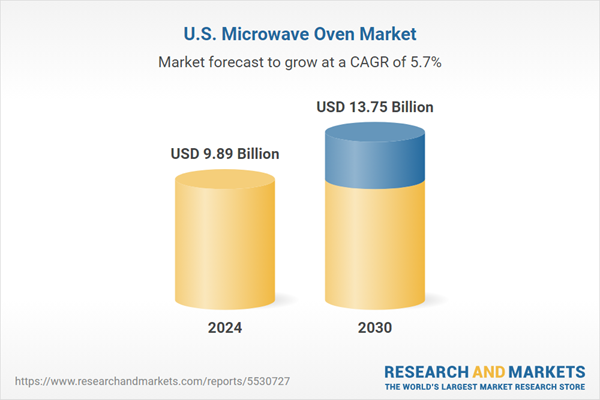Speak directly to the analyst to clarify any post sales queries you may have.
10% Free customizationThis report comes with 10% free customization, enabling you to add data that meets your specific business needs.
Key Market Drivers
Demand for Convenience and Time-Saving Solutions
The growing demand for convenient, time-efficient cooking methods is a significant driver in the U.S. microwave oven market. With busy lifestyles and increased consumption of ready-to-eat and frozen meals, consumers are turning to appliances that enable quick and hassle-free food preparation. Microwave ovens fulfill this need by offering a fast and reliable way to heat, defrost, and cook meals. This is especially important for working professionals and urban households seeking to minimize time spent in the kitchen. The appliance's role in simplifying daily routines and enhancing kitchen efficiency continues to fuel its popularity across U.S. households.Key Market Challenges
Market Saturation and Intense Competition
The U.S. microwave oven market faces a significant challenge in the form of saturation, particularly in urban regions where most households already own a microwave. As a result, market growth relies largely on replacement purchases, which are often infrequent and driven by pricing or upgraded features. Moreover, the market is highly competitive, with established brands like Whirlpool, LG, GE Appliances, and Samsung competing aggressively through pricing strategies, innovation, and promotions. This competitive pressure narrows profit margins and raises barriers for smaller brands and new entrants, limiting opportunities for expansion in an already mature market.Key Market Trends
Emphasis on Multifunctionality and Versatility
A notable trend shaping the U.S. microwave oven market is the increasing demand for multifunctional and versatile appliances. Consumers are gravitating towards models that combine multiple cooking modes - such as baking, grilling, air frying, and roasting - in one unit. Convection microwave ovens, which merge the benefits of microwave and convection cooking, are gaining traction for their ability to perform a variety of culinary tasks. This preference aligns with a broader movement toward optimizing kitchen space and enhancing efficiency, particularly in urban homes where compact, all-in-one solutions are increasingly valued.Key Players Profiled in this United States Microwave Oven Market Report
- Whirlpool Corporation
- Electrolux Home Products, Inc.
- Samsung Electronics America, Inc.
- BSH Home Appliances Corporation
- LG Electronics USA, Inc.
- Haier U.S. Appliance Solutions, Inc.
- Panasonic Corporation of North America
- Illinois Tool Works Inc.
- Sharp Electronics Corporation
- Breville USA, Inc.
Report Scope:
In this report, the United States Microwave Oven Market has been segmented into the following categories, in addition to the industry trends which have also been detailed below:United States Microwave Oven Market, by Product Type:
- Convection
- Grill
- Solo
United States Microwave Oven Market, by Application:
- Household
- Commercial
United States Microwave Oven Market, by Structure:
- Free-Standing
- Built-In
United States Microwave Oven Market, by Distribution Channel:
- Store Based
- Non-Store Based
United States Microwave Oven Market, by Region:
- South
- West
- Midwest
- Northeast
Competitive Landscape
Company Profiles: Detailed analysis of the major companies present in the United States Microwave Oven Market.Available Customizations:
With the given market data, the publisher offers customizations according to a company's specific needs. The following customization options are available for the report.Company Information
- Detailed analysis and profiling of additional market players (up to five).
This product will be delivered within 1-3 business days.
Table of Contents
Companies Mentioned
The leading companies profiled in this United States Microwave Oven market report include:- Whirlpool Corporation
- Electrolux Home Products, Inc.
- Samsung Electronics America, Inc.
- BSH Home Appliances Corporation
- LG Electronics USA, Inc.
- Haier U.S. Appliance Solutions, Inc.
- Panasonic Corporation of North America
- Illinois Tool Works Inc.
- Sharp Electronics Corporation
- Breville USA, Inc.
Table Information
| Report Attribute | Details |
|---|---|
| No. of Pages | 81 |
| Published | May 2025 |
| Forecast Period | 2024 - 2030 |
| Estimated Market Value ( USD | $ 9.89 Billion |
| Forecasted Market Value ( USD | $ 13.75 Billion |
| Compound Annual Growth Rate | 5.7% |
| Regions Covered | United States |
| No. of Companies Mentioned | 11 |









